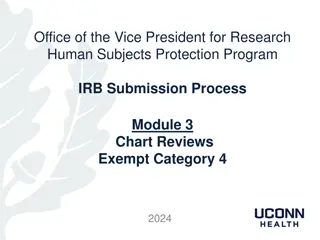
Polynomial Operations and Exponents
Master polynomial operations including adding, subtracting, and multiplying polynomials. Understand rules of exponents for simplifying expressions. Learn techniques like FOIL and multiplying binomials.
Download Presentation

Please find below an Image/Link to download the presentation.
The content on the website is provided AS IS for your information and personal use only. It may not be sold, licensed, or shared on other websites without obtaining consent from the author. If you encounter any issues during the download, it is possible that the publisher has removed the file from their server.
You are allowed to download the files provided on this website for personal or commercial use, subject to the condition that they are used lawfully. All files are the property of their respective owners.
The content on the website is provided AS IS for your information and personal use only. It may not be sold, licensed, or shared on other websites without obtaining consent from the author.
E N D
Presentation Transcript
Category 1 STAAR Review 2017
Like Terms Like Terms Like Terms refers to monomials that have the same variable(s) but may have different coefficients. The variables in the terms must have the same powers. Which terms are like? 3a2b, 4ab2, 3ab, -5ab2 4ab2 and -5ab2 are like. Even though the others have the same variables, the exponents are not the same. 3a2b = 3aab, which is different from 4ab2 = 4abb.
Adding Polynomials Adding Polynomials Add: (x2 + 3x + 1) + (4x2 +5) Step 1: combine like terms: (x2 + 3x + 1) + (4x2 + 5) Notice: 3x doesn t have a like term. Step 2: Add the coefficients of like terms, do not change the powers of the variables: (x2 + 4x2) + 3x + (1 + 5) 5x2 + 3x + 6
Subtracting Polynomials Subtracting Polynomials Subtract: (3x2 + 2x + 7) - (x2 + x + 4) Step 1: Change subtraction to addition (Distribute the minus to ALL terms) (3x2 + 2x + 7) + (- x2 - 1x - 4) Step 2: Underline OR line up the like terms and add. (3x2 + 2x + 7) + (-x2 - 1x - 4 ) 2x2 + x + 3
Simplifying Polynomial Expressions Rules of Exponents When adding and subtracting polynomials, exponents do not change 2 2 a b + = 2 2 5 7 a b a b When multiplying polynomials, add exponents = 4 3 7 a a a 5 a a When dividing polynomials, subtract exponents = 3 a 2 When raising a power to a power, multiply exponents ( ) a 3 = 3 9 a Negative exponents switch places (top to bottom, or bottom to top) 3 2 a b c 2 4 b c a = 4 3
Multiplying Polynomials Example Multiply each of the following. 1) (3x2)( 2x) = (3)( 2)(x2 x) = 6x3 2) (4x2)(3x2 2x + 5) = (4x2)(3x2) (4x2)(2x) + (4x2)(5) (Distributive property) = 12x4 8x3 + 20x2 (Multiply the monomials)
Multiplying Square of a Binomial Example Multiply (3x + 4)2 Remember that a2 = a a, so (3x + 4)2 = (3x + 4)(3x + 4). (3x + 4)2 =(3x + 4)(3x + 4) = 3x(3x + 4) + 4(3x + 4) = 9x2 + 12x + 12x + 16 = 9x2 + 24x + 16
8. Find the area of the rectangle. + 7 10 x + 4 8 x + + 2 28 96 80 x x
Dividing Polynomials Dividing a polynomial by a monomial Divide each term of the polynomial separately by the monomial. Example + 3 3 12 36 15 12 36 15 a a a a = + 3 3 3 3 a a a a 5 = + 2 4 12 a a
Dividing Polynomials 4 5 x Divide 7x into 28x2. Multiply 4x times 7x+3. Subtract 28x2 + 12x from 28x2 23x. Bring down 15. + 2 7 3 28 28 23 12 35 35 15 x x x x x x x 2+ Divide 7x into 35x. Multiply 5 times 7x+3. Subtract 35x 15 from 35x 15. 15 15 Nothing to bring down. So our answer is 4x 5.
Step 1: FIND THE GCF + 3 2 2 c d GCF c d 3 cd : 6 12 = 3 Example Simplify Polynomials cd Step 2: Divide by GCF (6c3d 12c2d2+3cd) 3cd = 6c3d 12c2d2 + 3cd 3cd 3cd 3cd 2c2 4cd + 1
The answer should look like this: Ex: 6c3d 12c2d2+3cd = 3cd(2c2 4cd +1)
Factoring Trinomials How can we factor trinomials such as x2 + 7x + 12? One method would be to again use algebra tiles. x + 4 x x x x x2 x + 3 x x x 1 1 1 1 1 1 1 1 1 1 1 1 We now have a rectangular array that is (x+4) by (x+3) units. Therefore, x2 + 7x + 12 = (x + 4)(x + 3).
Factor ax2 + bx + c m mx
To factor the difference of two squares, express each term as a square of a monomial then apply the rule... a2 b2= (a +b)(a b) Ex: x2 16 = x2 42= (x +4)(x 4)
Undo Squares Undo Squares Square Roots Square Roots
Simplify Perfect Square Factor * Other Factor 8 4 * 2 2 2 = = 2 5 4 * 5 = LEAVE IN RADICAL FORM = 20 16 * 2 4 2 32 = = 5 3 25 * 3 75 = = 2 10 40 4 * 10 = =
Functions and their equations A function is relationship where each x is paired with only one y. In other words, the x s cannot repeat! Function Not a Function x 0 1 1 3 x 0 1 2 3 y 2 3 4 6 y 2 3 4 6 1, A.01B
Functions and their equations To identify a function in a graph you must use a vertical line test. Since the vertical red line only touches the function (in green) at one point at a time, this is a function. 1, A.01B
Independent and Dependent Quantities Independent and Dependent Quantities In an equation, x represents the independent quantity and y represents the dependent quantity Ex: y = 2x + 3 Independent Dependent
Multiple Representations of Functions A function can be represented by an: Equation Mapping Graph Table Data Points f(x) = {(-2, -7), (0, -1), (1, 2), (2, 5)} y = 3x - 1 -2 0 1 2 -7 -1 2 5 x -2 0 1 2 y -7 -1 2 5 Verbal Description y is a number one less than three times x 1, Ab1D
Given a function like y = 3x + 2x 4 and a set of independent variables like {-1, 0, 1, 2} and asked to find a corresponding dependent variable Remember that independent variables represent the x values and dependent variables represent y values Just use the calculator to graph the function and look at the table to identify the corresponding y values
Arithmetic vs. Geometric Sequences Geometric Sequences Increases by the common ratio r Multiplication or Division u r Arithmetic Sequences Increases by the common difference d Addition or Subtraction d = un un 1 n = u n 1
Important Formula for Geometric Sequence: Recursive Formula an = (an 1 ) r Where: an is the nth term in the sequence a1 is the first term n is the number of the term r is the common ratio
Geometric Sequence Patterns Given a geometric sequence, you must determine the equation for the function. Make a table to represent the sequence Use STAT to calculate the answer Find the answer that fits the calculator answer 1. 2. 3. 2, A.03B
Heres an example: 1, 4, 9, 16 (geometric Exponetial Regression) Make a table Figure # of squares 1 4 9 16 1 2 3 4 In the calculator go to STAT and input the table STAT CALC to ExpReg
Quadratic Regression Quadratic Regression Table is not Arithmetic (add) or Geometric (mult) Now use STAT to calculate the equation. STAT-Edit ENTER NUMBERS STAT CALC 5, ENTER Look for an answer that has an equation like y = x .





















